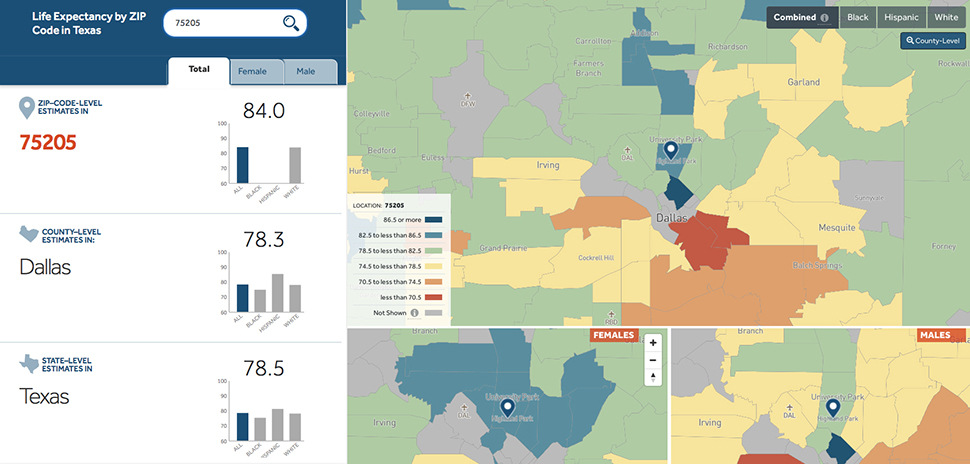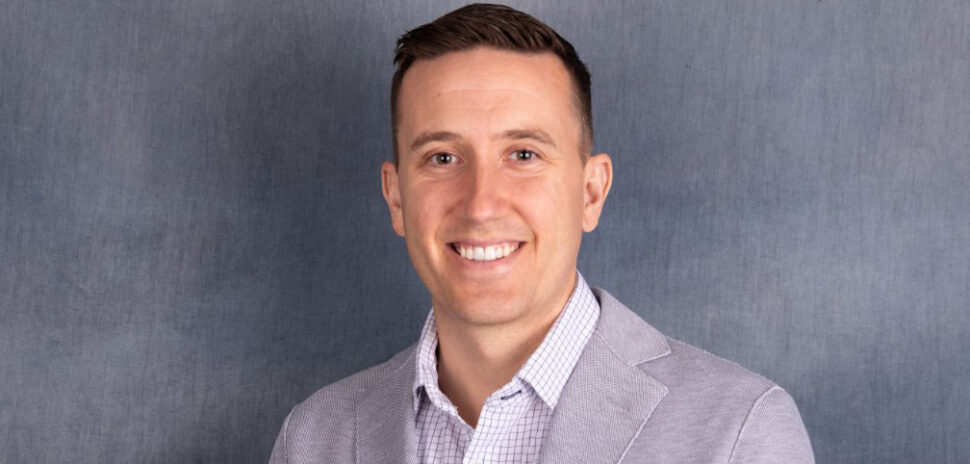![]() Every week, we do a little research of our own. We’re looking for scientists, professors, engineers, entrepreneurs—anybody, really—engaging in research and development across North Texas.
Every week, we do a little research of our own. We’re looking for scientists, professors, engineers, entrepreneurs—anybody, really—engaging in research and development across North Texas.
There’s plenty of good work being done. If you want to put R&D under your microscope, sign up for our e-newsletter.
Interactive map gives empirical look at Texans’ life spans
How long do people in my neighbor hood live? What about where Grandma lives?
While we don’t know exactly how long we’ll live, scientists at the UT Southwestern Medical School have used data from a Department of State Health Services Center for Health Statistics analysis to develop an interactive map that could answer questions about your own life expectancy.
The analysis and map use data from 2005-2014 death records. The analysis shows a wide—UTSW called it dramatic—variation based on gender, race/ethnicity, and geography.
For example, life expectancy varied as much as 30 years between ZIP codes, and the life expectancy of women, overall, was 5.2 years longer than men’s.
The longest life expectancy in the state? That would be in Hutto, northeast of Austin. The shortest life expectancy? Look no further than a ZIP code in Fort Worth.
Go here to find the map. You can check out every ZIP code in Texas.
Also at UTSW: New tech may predict Melanoma metastasis
Researchers at UT Southwestern Medical Center have teamed up with scientists from Ben-Gurion University of the Negev in Israel to develop groundbreaking AI technology to identify melanoma cells that are likely to metastasize to other areas of the body.
Melanoma is the most-dangerous form of skin cancer and often is associated with ultraviolet light exposure from the sun.
The new tech uses microscopic cameras to record video of cells, Ben-Gurion University of the Negev says. It then identifies the appearance and behavioral patterns of cells that have metastatic potential. The process is called “quantitative live cell histology.”
The new technology recently was presented by Dr. Assaf Zaritsky, of the BGU Department of Software and Information Systems Engineering, and UT Southwestern professor Gaudenz Danuser at the American Society for Cell Biology/EMBO conference in San Diego.
“Beyond metastasis prediction potential, the computer models also allowed us to distinguish between cancer cells taken from different patients by quantifying factors that are not visible to the naked eye,” Zaritsky said in a statement.
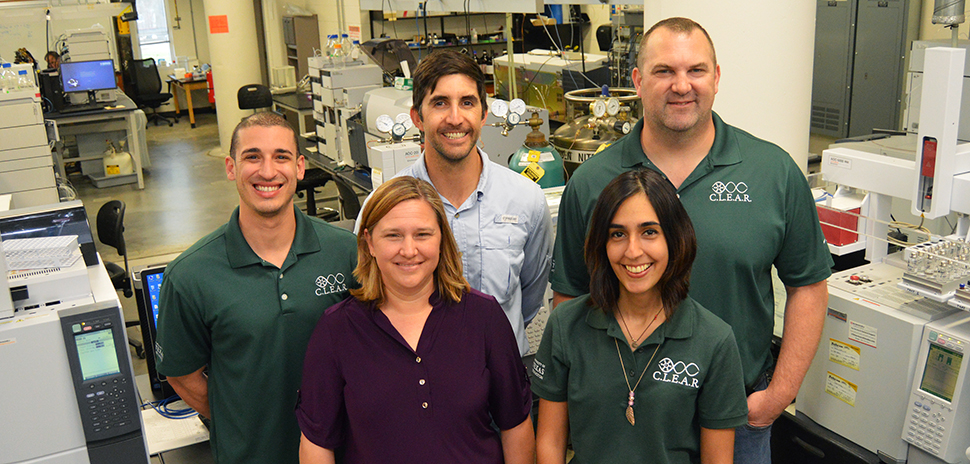
Pictured: The CLEAR team. Front row, from left: Tiffany Liden and Inês Santos. Back row, from left: Manny Varona-Torres; Zacariah Hildenbrand, Kevin Schug. [Photo: Courtesy UT Arlington]
UTA team extends collaboration in study of West Texas water
The Collaborative Laboratories for Environmental Analysis and Remediation (CLEAR) at The University of Texas at Arlington has extended its collaboration with a Houston-based oil and gas exploration company to study both surface and groundwater in Apache Corp.’s Alpine High development in West Texas.
Apache’s sponsorship of CLEAR’s research team dates to 2016. The team uses the financial backing to perform an independent analysis of water quality in the region. The team is preparing their findings for publication in a forthcoming peer-reviewed scientific journal, UTA says.
Apache Corp.’s continued backing provides the CLEAR research team with support for targeted monitoring efforts throughout Reeves County that will cover thousands of organic, inorganic, and biological constituents that may be found in water.
“The water resources in and around Balmorhea are vital to the arid Trans-Pecos region,” CLEAR co-founder and scientific contributor Zacariah Hildenbrand said in a statement. “Given the ecological, societal, and economic significance of San Solomon Springs, we are fortunate to have this opportunity to comprehensively monitor these waters.”
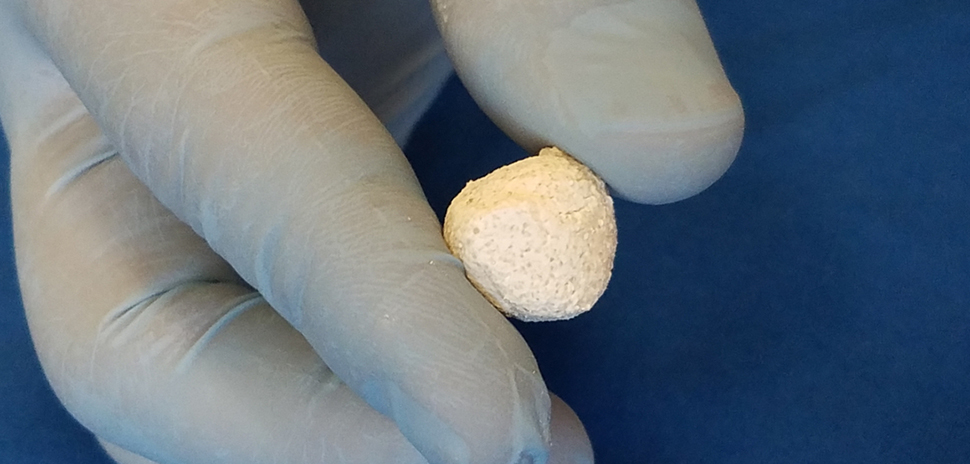
OsteoCrete is a bone void filler that is designed to assist with bone repair and regeneration. [Photo: Bone Solutions]
Bone Solutions Inc. reaches milestone with bone repair product, ramps up commercialization
Bone Solutions Inc., a Colleyville-based orthobiologics company, has surpassed a milestone, successfully implanting its bone repair product, OsteoCrete, in more than 500 cases. It’s is now preparing to ramp up commercialization of the product, it says.
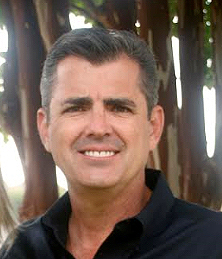
Drew Diaz
OsteoCrete is a bone void filler that is designed to assist with bone repair and regeneration, Bone Solutions says. OsteoCrete is the first such product in the U.S. to incorporate magnesium, an important property for bone health and development.
“The company has now reached a wonderful milestone; we have successfully implanted OsteoCrete in over 500 cases throughout the United States with no adverse reactions or failures,” CEO and President Drew Diaz said in a statement. Many modern bone-repair devices are calcium-based and don’t “exhibit a combination of compressive strength and ideal resorption rate.”
OsteoCrete is 100 percent resorbable, meaning it can be assimilated back into the body and is replaced with remodeled bone as the patient heals.
The Food and Drug Administration has cleared the technology for use in bone-related surgical procedures—from complex sport-related injuries to all musculoskeletal extremities trauma cases, Bone Solutions says.
![]()
Get on the list.
Dallas Innovates, every day.
Sign up to keep your eye on what’s new and next in Dallas-Fort Worth, every day.










